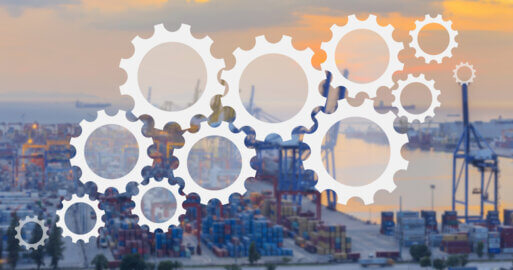Cloud Integration: Solve Today’s IT Challenges and Prepare for Tomorrow

Since 1986, SEEBURGER has been transforming the IT integration landscape with one future-proof platform, the SEEBURGER Business Integration Suite (BIS). Nearly 40 years later, we continue to help companies of all sizes, across all industries, solve today’s integration challenges while preparing for tomorrow’s integration requirements.
IT departments are facing a dramatic shortage of staff. According to SEEBURGER’s Chief Cloud Officer, Martin Kuntz, companies “will no longer have anyone to take care of their business integration, while the security, business and legal requirements and the complexity of business integration will increase. This will lead companies to move their entire business integration into the cloud.” With automotive industry examples, this blog explores how to solve today’s top 5 integration challenges while overcoming staff shortages and moving business integration into the cloud.
1. Quickly onboard and connect trading partners
Does your integration platform support all commonly-adopted industry standards and communication protocols – EDIFACT, VDA, ANSI x12, OFTP2, AS2, SFTP, VAN, REST and JSON? Over 4,000 automotive customers benefit from SEEBURGER technology, processes and global SEEBURGER Consulting teams, all of which support the latest automotive industry standards to ensure that integration projects are delivered on time and on budget.
Standard Partner Mappings: SEEBURGER mappings are unique because their architecture is canonical, which allows for smoother integration between systems. Many benefits of canonical mappings, compared with point-to-point mappings used by other vendors, include:
- SEEBURGER maintains a mapping library of over 20,000 EDI maps prepared and documented to a very high standard to accurately reflect end-customers’ published EDI Specifications
- Canonical mapping decouples the trading partner maps from the ERP interfaces, meaning that partner connections and ERP connections can be updated independently from one another and easily integrate into the service (more information about double mapping under point 3).
- The pace of implementation projects can be significantly increased.
- It simplifies the transition between ERP systems, because only the ERP interfaces need creating/updating.
Partner Communication Service: Is a central gateway managed in the SEEBURGER Cloud that routes your messages to your partners without having to establish an individual connection to each partner. Instead, only one connection from any kind of system to the gateway is required to exchange messages with all partners connected to the gateway via their preferred communication protocol. The Communication Service consists of the following benefits:
- Faster, simplified Partner Connectivity: Taking advantage of standard partner connectivity already established via the B2B Directory. Both you and your trading partner can connect to the Gateway via your preferred protocol.
- Communication Monitoring: Here you can monitor the status of your incoming and outgoing messages.
- Partner Certificate Management: Optional service add-on where SEEBURGER manages ongoing certificate renewals and master data changes.
EDI Validators: help to identify and avoid EDI message errors early on, before the message is sent. Depending on the focus of the compliance checks, these may scan for technical, structural and even some content errors. If they find an error, they notify the sender before the message is sent out, allowing you to intervene.
Experienced Global Project Delivery Team: SEEBURGER consultants are experienced with many years of expertise in the rapid delivery of complex EDI migrations and partner onboarding.
2. Prepare for Industry 4.0 technologies
Real-time data in smart manufacturing is becoming increasingly important, and in what is known as Industry 4.0, machines are increasingly supplying data to systems that can monitor production quality and ensure the traceability of safety-relevant parts, right through to the delivery completion notification.
Automotive API and EDI integration
In the automotive industry, SEEBURGER leads in the creation of B2B API standards for inbound logistic processes, working alongside traditional EDI Advance Shipping Notifications (ASNs). ODETTE sets the industry’s best practices and recently announced SEEBURGER as a Technology Partner, citing SEEBURGER will “play an important role in contributing to Odette’s IT expertise in the growing area of API standards.”
Without EDI, JIT/JIT processes would not be possible. The first data was transferred in the supply chain in 1985, and over 40 years, the formats (EDIFACT, ANSIx12) and communication methods (OFTP2, AS2, SFTP) have evolved and are now being extended by API technologies (REST, JSON). Automotive APIs provide impulses (geo-coordinates) and content (serial numbers, for example, of battery cells) and enable new transport orders to be received via transport management system (TMS) platforms for capacity utilization optimization.
In order to ensure smooth production processes in times of disrupted supply chains, it is important to know exactly when parts will be available, as well as which mode of transport (lorry, ship or train) is used to send parts and where they are located at any given time (Track and Trace). Thus, collecting and transmitting this data is why APIs are indispensable in the automotive industry.
MMOG/LE – OEM-driven Supplier Self-Assessment
The self-assessment Materials Management Operational Guidelines/Logistical Evaluation (MMOG/LE) continues to advance new global standards for supply chain processes. SEEBURGER supports MMOG/LE integration compliance and is a long-term partner of ODETTE, AIAG and VDA. With SEEBURGER BIS, you can achieve full MMOG/LE compliance, including:
- Systems integration – Over 43 criteria for compliance in F3 (High Importance), including the automated exchange of data with ERP, EDI/Web, barcoding and quality processes.
- Full electronic exchange of data with sub suppliers – WebEDI.
- Adoption of advanced technologies – machine learning and smart manufacturing.
Process and Data Security
The systems used in the automotive industry for collecting and transmitting data must be set up securely, both in terms of operational aspects such as availability (AA cluster) and security aspects such as confidentiality (DataStore) and vulnerability (SecureProxy). However, this is not a value-add activity for production processes, because it involves a high degree of internal and financial effort. Therefore, a growing industry trend is outsourcing EDI and API integration to an Integration Platform as a Service (iPaaS) model with a cloud integration services provider that meets operational security ISO27001, ISAE3402 and TISAX certifications.
Sustainability in the automotive industry
The principle of sustainability has become a core value in the automotive industry. There is a shift in the automotive industry toward a net-zero economy. However, the aim is not only to prevent the emission of harmful greenhouse gases from vehicles. It is also about the development of a new kind of mobility. This includes the use of renewable energies, networking, autonomous driving, e-mobility and shared mobility. Providing information on the carbon footprint of production equipment (and generally reducing of the carbon footprint), as well as avoiding unnecessary truck journeys (i.e. empty runs), will also help increase sustainability in the automotive industry.
3. Prepare for changes to ERP systems
SEEBURGER integration specialists assist more than 11,000 customers worldwide run common ERP and MRP systems, including SAP, Microsoft Dynamic/Business Central, IFS, Oracle and EPICOR. SEEBURGER Connectors can help extend your ERP or MRP system with other applications, including business processes and other assets across your entire ecosystem, both on premises and in the cloud.
Connectors for ERP/Application Integration
As every business increases digitalization, it is critical to quickly and efficiently integrate systems, processes, partners and data from a wide variety of sources. SEEBURGER has developed over 180 functionality-rich connectors that easily integrate and securely connect any endpoint. All connectors have been tested and used in actual customer environments, and many come with pre-packaged documentation and templates to make connectivity even easier with adapters for ERP systems like SAP, CRM systems like Salesforce and E-Commerce systems like Shopify.
Key questions to consider when planning a change to your ERP system include:
- What systems and other endpoints do you need to integrate?
- What types of integration patterns are there?
- What type of deployment model would you most benefit from for your integration platform?
- How can you make B2B integration easier by employing canonical (common) formats and content?
SEEBURGER has invested heavily in the development and implementation of a canonical architecture, also known as double conversion. According to this architecture, on the backend side, a process mapping is created for each ERP system and business process that converts the data into a standard XML structure (canonical master format) defined by SEEBURGER. On the partner side, a standard partner mapping is created for each process and partner. These are “software products in maintenance”. Changes to the partner mappings are subsequently maintained and delivered.
This canonical approach was developed specifically to minimize the amount of change required, for example, during migrations or the introduction of new ERP environments, and to minimize disruption to customers. The advantage is that changes to the ERP environment usually do not require changes to the partner connections and customers can duplicate incoming data and distribute it in parallel to different ERP environments or send outgoing data from different ERP systems to the same partner.
4. Adopt cloud integration technology
The operation of an on-premises integration platform can quickly become very time consuming, especially if the requirements for security, availability and flexibility are high. It is important to carefully weigh the different requirements of the lines of business with the IT department, which is centrally responsible for all integration and security issues, in order to choose the most suitable operating model for your specific use cases.
An integration platform must be available 24/7, and its operation requires a team of specialists who can solve all kinds of process-related problems. The SEEBURGER BIS solutions offer flexibility for any cloud deployment or operational model:
- On-premises
- Hybrid
- Hyperscaler (Public Cloud)
- iPaaS (SEEBURGER Cloud)
- Fully Managed Service (SEEBURGER Cloud)
The advantages of ecosystem integration in the SEEBURGER Cloud include:
- Cost savings: Instead of investments, only operating costs are incurred. SEEBURGER provides qualified personnel for the 24/7 operation of the integration platform.
- Certified 24×7 operations with assured security against increasing cybercrime: SEEBURGER assuring the confidentiality and integrity of data, processes and communications with highly-secure operations governed by strict guidelines, certifications, regulations and audits.
- Flexibility: Companies with an efficient IT department retain as much flexibility, responsiveness and independence as they want, thanks to freely configurable operating models.
- Support for all common integration patterns and standards: Asynchronous B2B/EDI Integration, Synchronous API Integration, E-invoicing, MFT, EAI and Internet of Things (IoT) processes are all supported.
- Volume scalability – The SEEBURGER EDI/B2B service grows as you need it, whether processing one thousand or one million files per month.
- Support for critical business processes – reliability and performance suited for business-critical processes, such as JIT/JIS.
- Defined SLA processes – with full transparency and monitoring
- Defined Service Desk Process
- Incident, Management
- Change Management
- Disaster Recovery
- Business tracking providers drill-down monitoring/reporting of data in real time.
- Monthly SLA reporting – To ensure that all parties have a clear picture of the service being provided by SEEBURGER, we provide a monthly report with a detailed analysis of performance and stability, including service availability against the contracted metrics.
5. Digitalize supply chains
A supply chain is only as good as its weakest link. In the automotive industry, for example, this means setting up new processes (transport status [IFTSTA], ordering and processing empties) and new message versions (EDIFACT syntax version 4) while connecting additional partners, such as upstream suppliers and logistics providers, via EDI and APIs.
As many companies confront the uncertainties and risks to their supply chain, one thing is certain: cloud integration technology is a solution to the challenges of supply chain digitalization. A supplier onboarding campaign tool, such as the SEEBURGER Community Management Application (CMA), can successfully support digitalization across supply chains.
Supplier Portal Service
SEEBURGER offers a WebEDI portal to integrate non-EDI enabled suppliers into the Cloud EDI Service. Suppliers can receive orders, create the follow-up documents and send them back.
For low-volume suppliers that cannot justify full EDI onboarding or do not have EDI capabilities or an ERP system that can handle the relevant processes, the Supplier Portal Service offers many of the benefits of full EDI. The Supplier Portal Service provides process integration with ARRIVAL’s ERP minimizing the time, errors and costs of manual document processing.
B2B Onboarding Service
Enables customers to quickly and easily connect partners to the EDI system. The service can be used not only for connecting new partners, but also communicating important information with existing partners and at the same time obtain feedback, e.g. format changes, guideline changes or important updates.
- Simple & transparent – Benefit from self-service – trading partners can manage onboarding directly, using step-by-step guidance provided by SEEBURGER. With monitoring options, you can follow all steps and keep track at all times.
- Save time – Pre-defined templates for surveys and recurring steps in the onboarding process are saved and can be reused. The service also offers full scalability to support the number of partners that need to connect.
- Save money – Reduce your need for EDI experts and reduce costs, thanks to the simple pricing model of the SEEBURGER Cloud Services.
Trading Partner Support Services
Large suppliers that service many customers generally have experienced EDI teams, but many suppliers do not, and this can be disruptive for customers.
The Trading Partner Service is provided by a team of SEEBURGER experts that manage the onboarding of business partners and provide ongoing operation support using the SEEBURGER Cloud tools.
- Direct communication with SEEBURGER EDI service team
- Support hotline for customer and trading partners’ technical questions
- Proactive and reactive error handling for conversion and communication errors
- Tracing of missing EDI messages incl. analysis
- Immediate error analysis and investigation when suppliers contact support hotline
- Interface between customer team and trading partners
Discover the SEEBURGER possibilities for ecosystem integration
The SEEBURGER BIS is a fully cloud-native, modular integration technology stack that offers flexible deployment-ready solutions for your unique ecosystem.
- Reduce time, effort and reliance on IT staff with pre‑packaged industry content, templates, mappings and connectors.
- Start by implementing the BIS solutions that you need now, and then implement additional solutions and their components when your business needs them.
- Minimize your total costs by digitalizing business processes with one centralized platform.
Whitepaper
Solve today’s integration challenges, and be prepared for tomorrow’s integration requirements, with the SEEBURGER BIS
Thank you for your message
We appreciate your interest in SEEBURGER
Get in contact with us:
Please enter details about your project in the message section so we can direct your inquiry to the right consultant.
Written by: Dr. Martin Kuntz
Dr. Martin Kuntz has worked for SEEBURGER since 2000, and is a member of the Board of Directors since 2015. His strengths lie in the Cloud, business applications, and the digitalization of specialty and technical business processes. He has degrees in physics and business administration. Earlier, he worked for several years in the Simulation department of the Karlsruhe Institute for Technology and for Airbus subsidiary Airbus Defence and Space.





